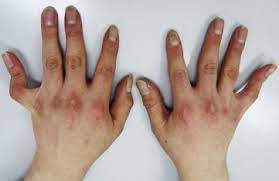 Arthritis is an inflammation (swelling and irritation) of the lining of the joints (such as the knees, shoulders, or knuckles). When the lining becomes inflamed, fluid is produced. The joints can become stiff (difficult to move), swollen (larger in size), painful, and warm to the touch. If the joints are swollen for 6 weeks or longer, a child may have juvenile arthritis. Juvenile arthritis is a long-lasting disease. It affects nearly 250,000 children under the age of 16 years.
Arthritis is an inflammation (swelling and irritation) of the lining of the joints (such as the knees, shoulders, or knuckles). When the lining becomes inflamed, fluid is produced. The joints can become stiff (difficult to move), swollen (larger in size), painful, and warm to the touch. If the joints are swollen for 6 weeks or longer, a child may have juvenile arthritis. Juvenile arthritis is a long-lasting disease. It affects nearly 250,000 children under the age of 16 years.
There are three types of juvenile arthritis: oligoarticular, polyarticular, and systemic. Oligoarticular arthritis involves a few joints. Polyarticular arthritis involves 5 or more smaller joints (like in the hands or feet). Systemic arthritis involves at least one joint and also involves the internal organs such as the heart, liver, spleen, and the lymph nodes.
Sometimes symptoms will go away for a period of time and the arthritis is considered in remission. This improvement in symptoms may last a short period of time or be long-lasting.
 Examination
Examination
It is important to know if there is joint stiffness when the child gets up after rest and if the joints are swollen.
Treatment
Surgical treatment is rarely needed for juvenile arthritis except to correct the position of a deformed joint or replace a joint in adults with advanced arthritis.
